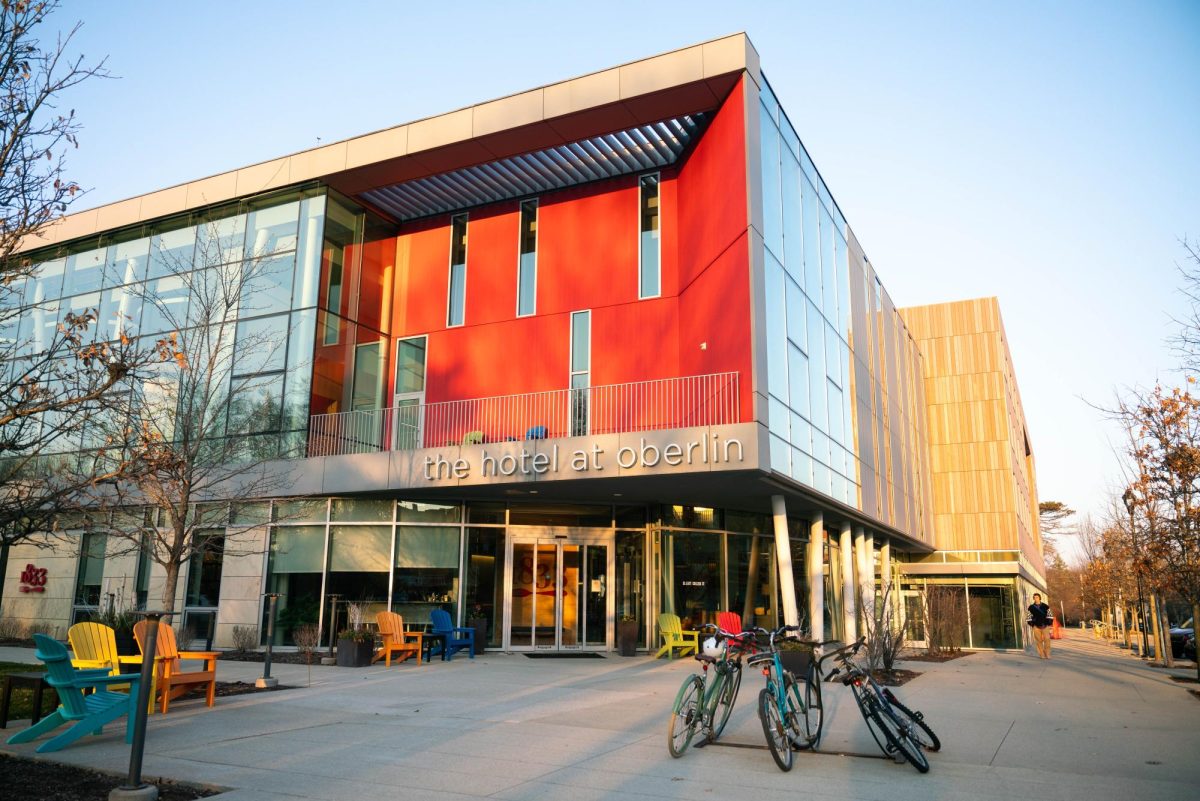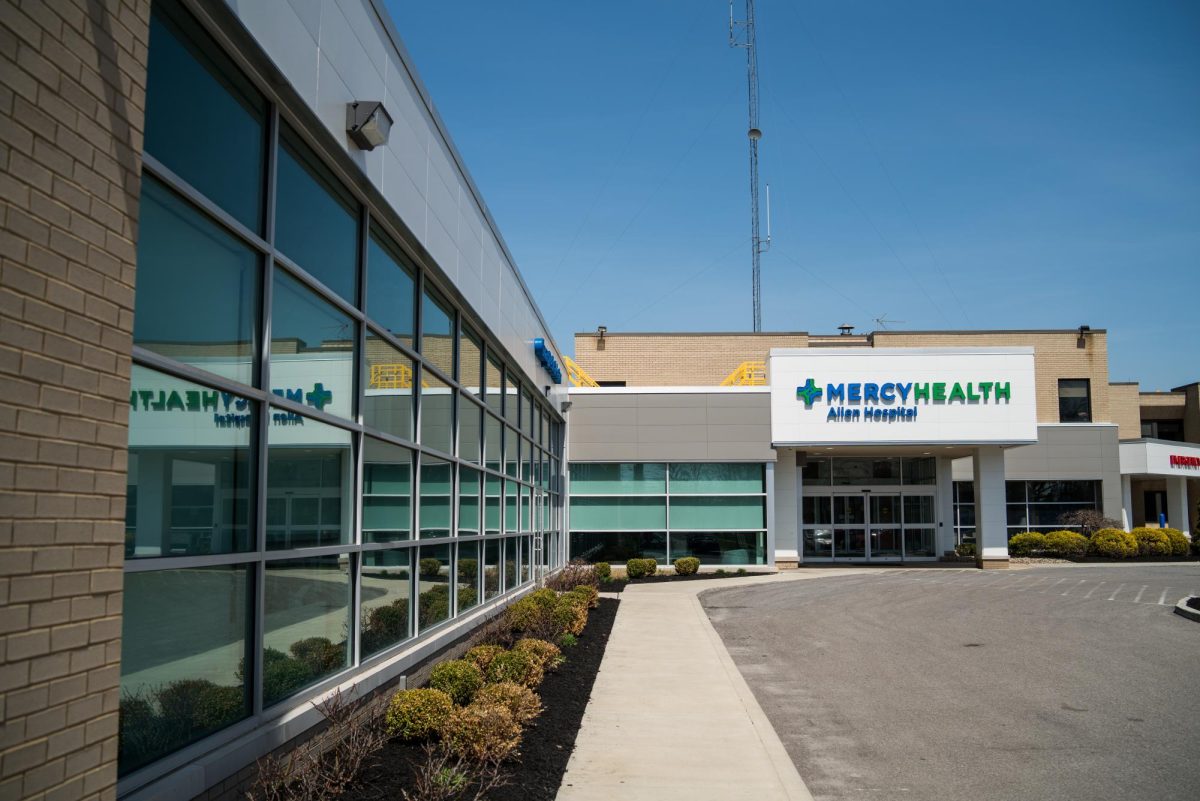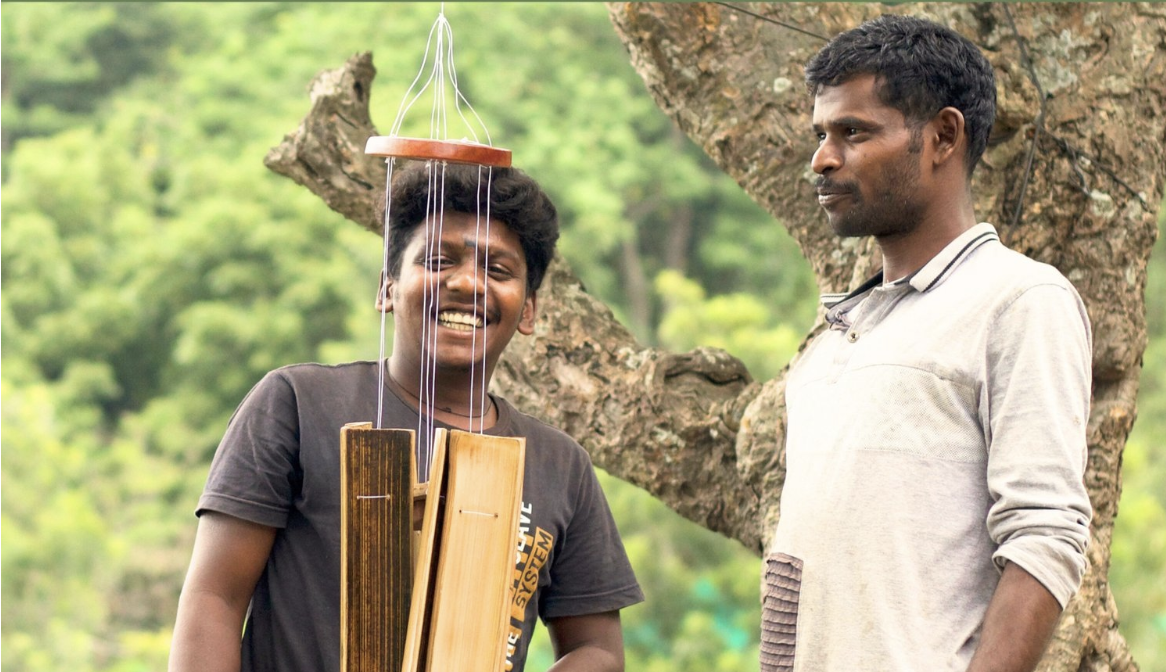Tran, Bhattacharyya Illustrate Asian Histories
April 8, 2016
For College seniors Gaby Hurtado-Ramos, Anders Villalta, Sreyashi Tinni Bhattacharyya and Richard Tran, engaging a wider community both through and beyond the art that they create, is critical. That prerogative comes through in their senior exhibition, I Will Not Be Buried, which opens today at the Firelands Association for the Visual Arts and will run until Sunday evening.
The four Studio Art majors, recognizing many related themes in their artwork, chose to collaborate on a show. “One of the reasons we were really attracted to each other’s work is because not only [do] we challenge dominant narratives, but … we see art as one of the many tools to do so,” Bhattacharyya said. “It comes from a place of respect for each others’ work, both as artists and living artists, because we all do organizational work outside of our artwork that is integral to our artistic process as well. Art is, in a way, a form of action to challenge political and social issues that we are all negotiating.”
I Will Not Be Buried showcases a variety of different mediums and perspectives. It includes installation sculpture, books, textile work, paintings, drawings, prints and animation — although this list is by no means exhaustive. “Richard [Tran] does a lot of sculpture and installation as well,” Bhattacharyya said. “Richard is Vietnamese-American, and a lot of their work is dealing with the history of Vietnam — especially in relation to the Vietnam War and the violence that they experienced during and since [then] — and also talking about the Vietnamese diaspora and the continuing violence that is experienced there. A lot of their work uses materials that are Vietnamese like rice paper, acetone — materials that reference and that are symbolic of lived experiences of Vietnamese and Vietnamese diaspora people.”
Bhattacharyya also engages with systems and ideals present in South Asian culture in her work. “A lot of my work is about womanhood in South Asian culture — investigating those structures and investigating the structures by which women are consumed,” she said. “Creating these visual objects — it’s not a solution, it’s not a statement but an unveiling of these hidden mechanisms that keep ticking away and have been ticking away for centuries and centuries and centuries and have become so normalized. Drawing those out. Unearthing.”
Villalta said they view their artwork as politically conscious but don’t necessarily expect it to transform society.
“It [is] important for folks to know about my work that this work is not the only thing that I do,” Villalta said. “Actually, I don’t see my art as a primary way that I try to transform people or try to transform society, but it illustrates a lot of ways that I do. I don’t want people to approach my work expecting to be changed, but if there is something in the work that resonates with their experiences, then that could be really beautiful. We see our work as inherently political based on our positionalities and our political practices, but that doesn’t mean that the work will incite a political response in every person, and I think that’s OK.”
Hurtado-Ramos said she hopes the exhibit will cause viewers to start conversations surrounding social justice issues important to her.
“I hope that [my work] incites conver sation around the issues that I’m dealing with,” she said. “Also, I’m hoping that people can find outrage, or can feel outrage, at issues of injustice. That is also part of conversation. But … I don’t see my work as a catalyst for change. I think that conversation is really important and visibility and getting people to think about something in a different way, even if someone already knows about immigration, [for example]. I’m not here to teach them more, but show them a different way of looking at it and an understanding that you might not be able to get from a book or an article.”
The artists hope viewers won’t be intimidated to approach them and talk about aspects of the pieces they might not understand.
“I want people to have conversations about it — with us or with each other — because I don’t think that my art necessarily speaks for itself,” Villalta said. “I want to invite people to ask us about our processes. … We are all invested in having political conversations about what needs to change.”
Bhattacharyya also said the space in which the show is presented in will shape the conversations about the work.
“I know that my work would be read very differently if it were shown in a space that were somehow marked as being for a South Asian community because of the kind of information that people would have and the references that people would get immediately,” she said. “[Here], I don’t expect people to get those references immediately, but I don’t want to spell it out in my artwork. It’s always something that I’m happy to share with people. I love sharing those kinds of histories and explaining those things to people personally.”
The subject matter of the exhibit tends to be serious, and the experiences and emotions portrayed in the work bring out personal narratives important to the artists.
“We’re all dealing with deep subjects that include hurt, a darkness, violence, pain — but that doesn’t mean that you’re going to walk into the show and it’s all going to be negative,” Hurtado-Ramos said. “That doesn’t translate to negativity. There’s a power in the way we’re bringing those out. But there is a seriousness to all of our work that is personal in different ways and in the end about people.”
























